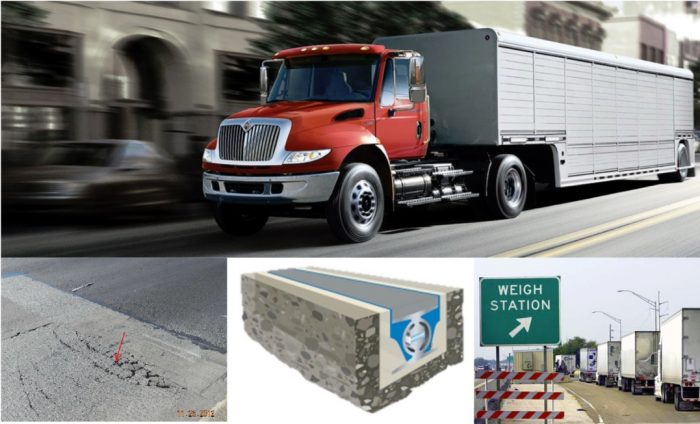Implementation and Effectiveness of Autonomous Enforcement of Overweight Trucks in an Urban Infrastructure Environment
Overview
Transportation agencies have been enforcing illegal overweight trucks at the weighing stations and by the Police enforcement units. It was found that only 8.6% of the actual overweight trucks are cited at the weight stations in New Jersey. Thus, current and traditional approaches for the enforcement of illegal overweight trucks are considered ineffective in reducing the damage cost to the infrastructure network including road pavements and bridges. The damage cost has been estimated at a high cost for various agencies and transportation departments and the burden grows heavier every year. There is an urgent need to employ autonomous enforcement systems to reduce the number of overweight trucks in a more ubiquitous and efficient manner than the current mode of operation. Currently, there are various available advanced technologies that can be integrated to implement autonomous enforcement system. However, it requires additional efforts to collect data on its performance to help support legislative efforts in various jurisdiction. It is also critical to study the type of sensors and systems and their overall performance with regard to their long- term durability aspects.

Implementing A-WIM Systems
The objective of this project is to implement an Advanced Weigh-In-Motion (A-WIM) system for autonomous enforcement of overweight trucks and study its effectiveness in reducing the number of illegal overweight trucks in an urban infrastructure environment. The work includes the development of various algorithms to help reduce the error in weighing vehicle weight due to environmental conditions and inherent factors, to accurately quantify the effects of illegal overweight trucks on infrastructure. In addition, the team will integrate and implement different technologies, such as camera, radio frequency identification (RFID), automatic license plate recognition (ALPR), etc. with A-WIM system at two potential sites located on the Brooklyn-Queens Expressway, Brooklyn, NY. The team will also perform life cycle cost analysis for various types of WIM sensors and systems to promote the most efficient and appropriate WIM system for use in autonomous enforcement.
Deliverables
The primary deliverables for this project include:
- A final report and technical papers
| Principal Investigator | Hani Nassif, Rutgers, The State University of New Jersey |
| Funding Source | NJTA |
| Total Project Cost | $250,000 (C2SMART $125,000 + Matching $125,000) |
| USDOT Award # | 69A3551747124 |
| Start and End Dates | 3/1/2020 – 2/29/2021 |
| Implementation of Research Outcomes | The team will implement various technologies with A-WIM at the testbed to develop the autonomous enforcement scheme for safe and resilient infrastructure. |
| Impacts/Benefits of Implementation | This implementation will help to extend service life of infrastructure (good to owner/agency), to provide safe infrastructure to the taxpayer (good to user) and to promote resiliency of infrastructure (good to society). |









